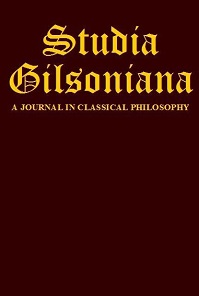Peirce, Sebeok, and the Semiotic Reformation on Contemporary Communications
Peirce, Sebeok, and the Semiotic Reformation on Contemporary Communications
Author(s): Maria Asuncion L. MagsinoSubject(s): History of Philosophy, Special Branches of Philosophy
Published by: International Étienne Gilson Society
Keywords: language; communication; sign; signification; semiosis; Charles S. Peirce; Thomas A. Sebeok; modeling system; John Deely; postmodernism; suprasubjective nature of sign; modeling theory; truth;
Summary/Abstract: Language in a broad sense becomes imperative for communication to ensue. Language considered as a system of signs and signification is achieved through a process involving sign relations, e.g. semiosis. Charles S. Peirce’s Theory of Signs can provide a basic framework for the elucidation of the intelligibility of signs. Furthermore, the ability for generating sign processes in an organized manner is determined by what Thomas A. Sebeok designates as an organism’s modeling capacity. Modeling capacities range from primitive to complex, thus generating three orders of language corresponding to language as a Primary Modeling System (PMS), a Secondary Modeling System (SMS) and a Tertiary Modeling System (TMS). This Peirce-Sebeok framework for communication, which John Deely places as “postmodern,” is premised upon what he designates as the suprasubjective nature of sign relations and their equally suprasubjective function. Thus, Sebeok’s Modeling Theory together with Peirce’s doctrine on the nature and behavior of signs can be used to direct the generation as well as the interpretation of language systems in accordance with the ultimate norm of communication, that is, to reflect truth as an icon of reality.
Journal: Studia Gilsoniana
- Issue Year: 7/2018
- Issue No: 1
- Page Range: 11-31
- Page Count: 21
- Language: English

